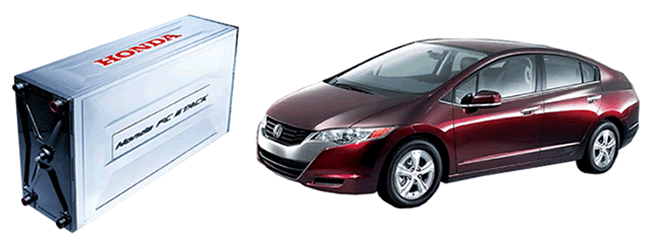|
3.2- HISTORY AND RELEVANCE
The first fuel cell reaction, that is the combination of hydrogen and air in order to produce water an electric current, was achieved in 1838 by Christian Friedrich Schoenbein, a Swiss chemist. Seven years later, Sir William Grove, English judge and scientist, recreated Schoenbein's experiment in a demonstration scale in a device he named "gas battery". The "fuel cell" word was coined in 1889 by Charles Langer and Ludwig Mond, who tried to create a device based on the "gas battery" that could work on air and coal gas.
The first workable hydrogen-air fuel cell was built by Francis T. Bacon in 1959. The invention, which generated a power of 5 kW, was previous to the creation, the same year, of a fuel cell powered 20 CV tractor by the Allis - Chalmers Manufacturing Company.
After the inception of the United States National Aeronautics and Space Administration (NASA) in 1958, hydrogen progressively attained a great relevance in space missions as a fuel for rocket propulsion and in-board fuel cells for electricity and drinkable water source.
Hydrogen started to be considered as an alternative to petroleum for transport during the decade of the 70's, when the OPEC embargo made the oil price rise. After that, and especially since the 90's, most of the automotive companies and countries from the first world have dedicated many efforts to develop and implant the fuel cell technologies. In this day and age, a hydrogen economy is still far from being implanted because of the great economic, physic and technical hitches that this project faces.
Nowadays most of the major carmakers are developing FCV workable prototypes, but only the Honda FCX Clarity, a fuel cell car fed by a 4 litre compressed hydrogen tank, is currently being produced in a small scale since 2006.
 |
Honda FCX Clarity and its Honda Fuel Cell Stack (from right to left).
Graphic source: <http://world.honda.com/FCXClarity/> |
|



